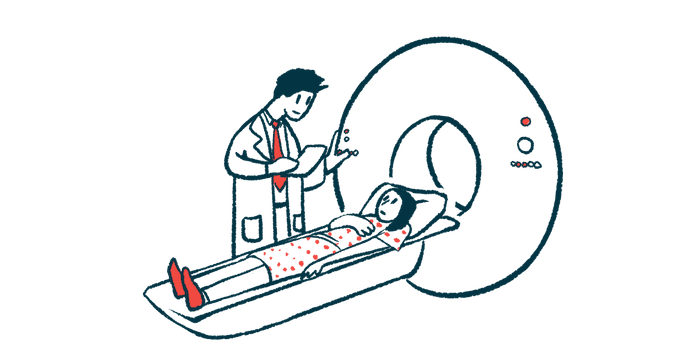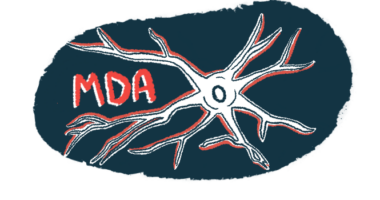Spinraza benefits in SMA types 2, 3 seen on muscle MRIs: Study
Children starting treatment at younger ages had better results

A quantitative MRI scan, which shows detailed images of muscles, can be used to track changes seen with Spinraza (nusinersen) treatment in children with spinal muscular atrophy (SMA), according to a new study from China.
SMA children started on the approved therapy at a younger age also were found to have better results, per the researchers.
Overall, the findings suggest that qualitative MRI or “qMRI has the potential to be used to evaluate the effect of [Spinraza] over time in SMA patients,” the team wrote.
Titled “A prospective cohort study on quantitative muscle magnetic resonance imaging during the treatment of spinal muscular atrophy types 2 and 3 in children,” the study was published in Pediatric Neurology.
Quantitative MRI scans can track muscle changes in SMA children
SMA is a genetic disease that damages motor neurons — the nerve cells responsible for controlling muscles involved in movement. As these muscles stop receiving signals from motor neurons, they gradually weaken, making movement increasingly difficult.
Biogen’s Spinraza is widely approved to treat all main types of SMA in children and adults. After an initial series of loading doses, it is administered directly into the spinal canal every four months. It works by increasing the production of SMN, the protein missing in SMA.
Like Spinraza, other disease-modifying treatments for SMA have been found to help children achieve motor milestones that were previously out of reach.
As a result, there is a growing need for new, reliable ways to measure subtle changes in motor function, according to the researchers.
“Current clinical motor function measures rely heavily on the cooperation of patients, many of whom may not be able to reliably monitor their disease progression or subtle changes during treatment,” the team wrote. Such limitations led the researchers to consider qMRI as an alternative for such tracking.
QMRI scans show detailed images of muscles, including their structure and fat content. It has been used to detect changes in muscles in young adults with SMA, even when their strength and motor function were stable for one year.
Younger SMA patients more likely to show gains with Spinraza
Now, a team led by researchers at Shenzhen Children’s Hospital sought to determine if qMRIs could help track patient responses to Spinraza. Their study involved 20 boys and eight girls, who had a mean age of 7.4 years. Among them, 15 had SMA type 2 and 13 had SMA type 3. In SMA type 2, symptoms appear between 6 and 18 months of age, while in SMA type 3, they usually appear later.
All children had scans of their pelvic and thigh muscles and were tested using the Hammersmith Functional Motor Scale Expanded (HFMSE) — in which higher scores indicate better motor function — both before starting Spinraza, and again six months later. X-rays were taken to check the Cobb angle, which measures spine curvature.
At the start, patients with higher HFMSE scores had signs of healthier muscles on qMRI scans, as well as less severe scoliosis, which is an abnormally curved spine. After six months, HFMSE scores increased by an average of 2.1 points. Patients younger than 4.6 years were more likely to show a clinically meaningful improvement, defined as an increase of at least 3 points.
This may indicate that [Spinraza] helped to improve atrophy [wasting] of muscle fibers in terms of muscle microstructure.
The amount of fat in the thigh muscles decreased over time as well. In SMA, fat replaces muscle fibers as muscles weaken, so less fat may be a sign of healthier muscles.
These results also showed a decrease in fractional anisotropy — a measure of how well muscle fibers are aligned.
“This may indicate that [Spinraza] helped to improve atrophy [wasting] of muscle fibers in terms of muscle microstructure,” the researchers wrote.
Children with SMA type 2 had larger decreases in the amount of fat compared with those with SMA type 3, although no further significant differences between the two SMA types were found in qMRI parameters or in HFMSE scores.
“It might be possible to infer that the type of disease may have a small impact on efficacy,” the scientists wrote.
Taking qMRI scans before starting treatment “can help assess disease severity,” the researchers wrote. They also noted that starting treatment at a younger age “may predict better improvements in motor function.”
The team called for more research using qMRI scans.
“In the future, a study with a larger patient group and longer follow-up period can lead to a more precise predictive model of [Spinraza] treatment efficacy,” the researchers wrote.









